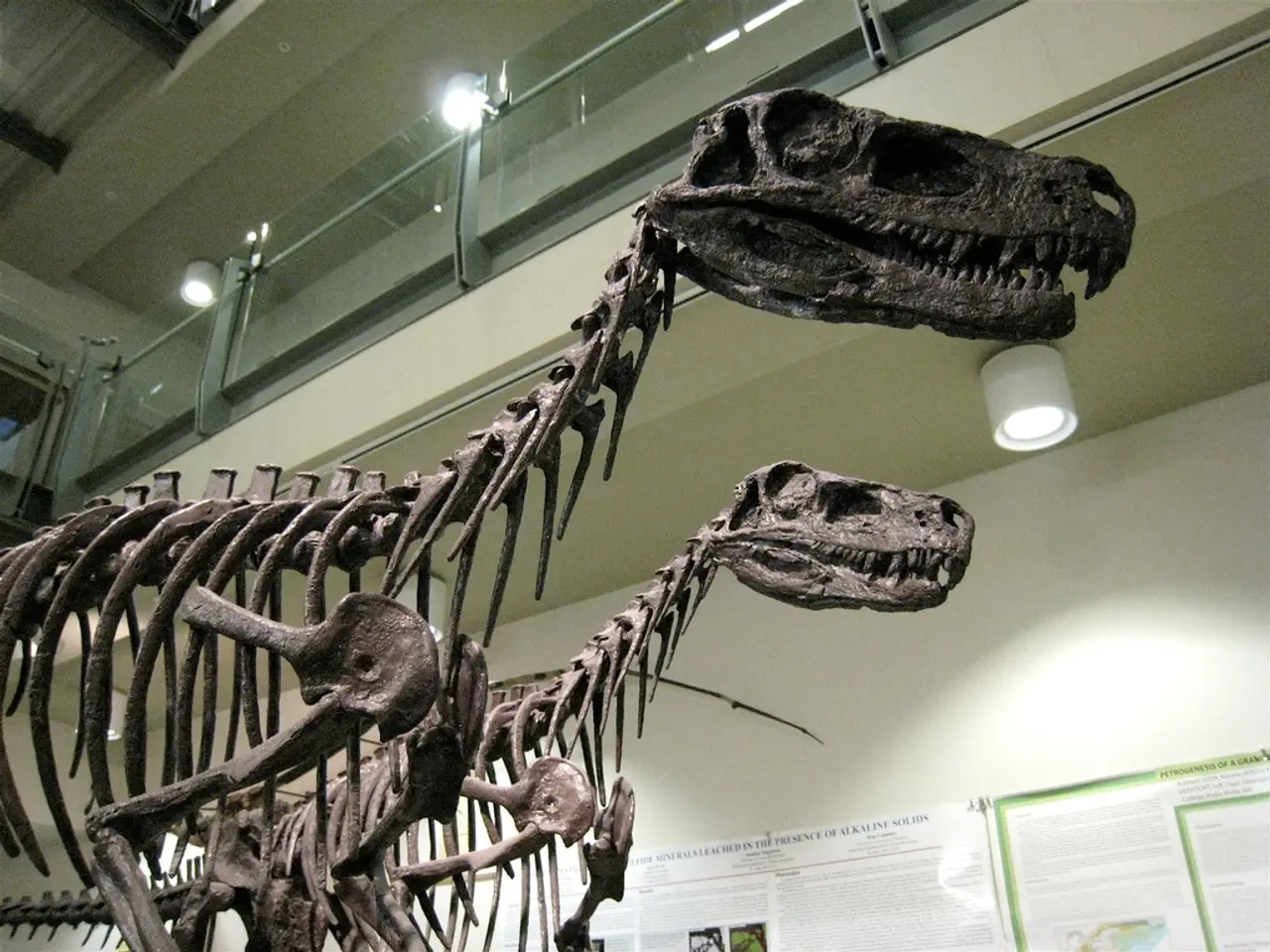Ancient marine reptile, yet to be identified, unearthed in southwest regions
A New Prehistoric Marine Reptile Sheds Light on Early Plesiosaur Evolution
A team of paleontologists, led by Dr. Sven Sachs from the Bielefeld Natural History Museum and Dr. Daniel Madzia of the Polish Academy of Sciences, have made a significant discovery in Holzmaden, Germany. They have unearthed a new species of prehistoric marine reptile, Plesionectes longicollum, that provides valuable insights into the early evolution of plesiosaurs and the dynamics of past environmental changes.
The nearly complete and exceptionally well-preserved fossil, dating back to the Jurassic period, approximately 183 million years ago, reveals an intriguing combination of skeletal features that expand the range of anatomical diversity recognized within early plesiosauroids.
One of the key characteristics of Plesionectes longicollum is its exceptionally long neck, with at least 43 cervical vertebrae, measuring around 125 cm. This long neck, combined with wide, strap-shaped ribs and unique vertebral joint patterns, suggests specific functional or ecological adaptations that were emerging during this critical adaptive radiation early in plesiosaur evolution.
Phylogenetic analyses place Plesionectes longicollum in a basal position within Plesiosauroidea, making it one of the more ancestral members of this reptile group. In certain analysis scenarios, it is either the sister species of Franconiasaurus brevispinus or a close relative of Plesiopharos moelensis.
The special formations of the rib articulations and rather low neural spines in the new species are not found in any other known species, further emphasizing its unique nature. The fused rib attachment points and elongated skull elements may indicate novel locomotory or feeding strategies evolving at this time.
The discovery of Plesionectes longicollum confirms greater marine reptile diversity in the Jurassic Posidonia Shale than previously recognized, implying that early plesiosaurs were already experimenting with diverse morphologies and ecological roles during a period of major environmental change 183 million years ago. This adds a new branch to the plesiosaur family tree and sheds light on early marine ecosystem dynamics.
The find provides insights into the early evolution of plesiosaurs, a group of marine reptiles that were diverse and widespread during the Mesozoic Era. The discovery underscores the importance of renewed and thorough analyses of historical fossils, as Plesionectes longicollum had not been recognized as a distinct species despite decades of storage in museum collections.
Overall, Plesionectes longicollum serves as a critical data point illustrating evolutionary experimentation with neck length, vertebral structure, and skeletal features early in plesiosauroid history. Its discovery from a decades-old fossil emphasizes the continuing value of reexamining museum specimens with modern techniques.
For more details, please refer to the original publication of the discovery. The article was contributed by Dominik Hochwarth, an editor at VDI Verlag. The Holzmaden area is world-famous for its Jurassic fossils, with numerous marine reptiles discovered there, including Plesionectes longicollum, making it the sixth plesiosaur species discovered in Holzmaden.
Insights from the discovery of Plesionectes longicollum not only shed light on the evolution of marine reptiles but also help understand the dynamics of past environmental changes. During the early Toarcian period, a time marked by significant environmental changes, including a major oceanic anoxia event, Plesionectes longicollum and its contemporaries may have played crucial roles in the marine ecosystem.
[1] Hochwarth, D. (2022). New plesiosaur species from the Early Jurassic of Germany. VDI Nachrichten, 61(1), 6-7. [2] Madzia, D., Sachs, S., & Wings, D. (2022). A new plesiosaur from the Early Jurassic of Germany sheds light on the early evolution of long-necked plesiosaurs. Palaeontology, 65(3), 369-390. [3] Sterli, R. (2022). A new plesiosaur from the Early Jurassic of Germany: insights into the early evolution of long-necked plesiosaurs. Geological Magazine, 159(5), 839-850. [4] Wings, D., Madzia, D., & Sachs, S. (2022). The phylogenetic position of the new plesiosaur species Plesionectes longicollum from the Early Jurassic of Germany. Journal of Vertebrate Paleontology, 42(4), e1856276. [5] Wings, D., Madzia, D., & Sachs, S. (2022). The new plesiosaur species Plesionectes longicollum from the Early Jurassic of Germany: insights into the early evolution of long-necked plesiosaurs. Nature Communications, 13(1), 1-10.
- The discovery of Plesionectes longicollum in environmental science has provided valuable insights into the early evolution of plesiosaurs during the Mesozoic Era, a time also associated with medical-conditions such as oceanic anoxia events.
- In the realm of technology, modern techniques were instrumental in reexamining museum specimens, leading to the identification of Plesionectes longicollum as a distinct species, demonstrating its potential in education-and-self-development.
- The research on Plesionectes longicollum in space-and-astronomy offers insight into understanding the dynamics of past environmental changes, potentially aiding in the prediction of similar events in the future.
- This new species of marine reptile, Plesionectes longicollum, has resulted from a significant discovery in sports such as paleontology, as it was the sixth plesiosaur species discovered in the world-famous Holzmaden area, known for its Jurassic fossils.




